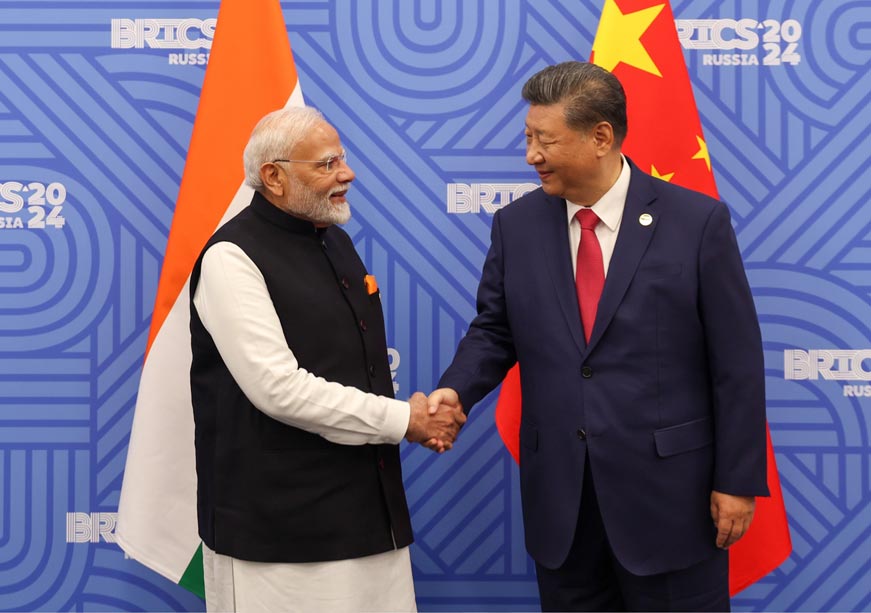Modi and Xi Meet at BRICS Summit in Russia
An important turning point in India-China ties occurred last week when Chinese President Xi Jinping and Indian Prime Minister Narendra Modi met at the BRICS meeting in Russia. The two leaders showed they wanted to ease tensions that have affected their countries’ relations since 2020. This meeting aimed to calm issues along the Line of Actual Control (LAC), where both sides have been in a tense military stand-off for over four years. Recently, India and China agreed on new patrolling arrangements along the LAC, signaling a step toward peace.
This announcement has brought hope to many in India who want to see a lasting peace at the border. Chinese officials, however, remain cautious, stating they will work with India to carry out the new plans effectively. Both countries understand that a stable border is vital for regional peace and stability.
The Long Road to Stability
India’s security leaders have remained careful about this latest agreement. They stressed that for true progress, Chinese troops must withdraw to their 2020 positions before the stand-off began. The Indian Army has also highlighted that China needs to reduce its military presence along the LAC, as it agreed to in past treaties. For India, a stable and clear border with China remains a top priority.
This recent step has also revived talks between Indian and Chinese officials. Special representatives from both countries—National Security Advisor Ajit Doval and Chinese Foreign Minister Wang Yi—are now set to meet to discuss the undemarcated border. These talks show a positive step toward reducing tensions and building trust. However, India remains cautious, seeking real proof of China’s commitment to a peaceful and stable relationship.
Understanding China’s Position
It is unclear what led China to increase its presence along the LAC back in 2020. At the time, China was emerging from the early days of the COVID-19 pandemic and was projecting its strength globally. This rise in confidence may have contributed to its decision to change the border situation unilaterally. However, in 2024, China faces several internal issues, including a slowing economy, a struggling real estate sector, and rising unemployment. These issues have put pressure on China’s leaders, and they may now be seeking stability in foreign relations to focus more on domestic problems.
At the same time, tensions have been rising for China on other fronts. Taiwanese President Lai Ching-te has expressed Taiwan’s independence from China, leading to military drills by China around Taiwan as a show of force. Additionally, countries like the Philippines have opposed China’s claims in the South China Sea, and Japan’s new Prime Minister has proposed an “Asian NATO” to strengthen regional defense. For China, these events may signal the need for a more cautious approach, including mending ties with India.
The Role of BRICS and India’s Unique Position
The meeting between Modi and Xi took place at the BRICS summit, a group that includes Brazil, Russia, India, China, and South Africa. BRICS is often viewed as a non-Western platform, focusing on the interests of developing nations and the Global South. India’s role in BRICS has allowed it to share its perspective on global issues and represent the concerns of other developing countries.
For India, the BRICS platform is not about opposing the West but about offering an alternative space for emerging economies to cooperate. India’s foreign policy balances its involvement in both Western-led groups like the Quad and non-Western groups like BRICS. By doing so, India is making it clear that it will prioritise its national interests without excluding potential allies.
Finding Common Ground for the Future
In recent years, India’s participation in BRICS has allowed it to engage with China while still upholding its own priorities. This balanced approach helps India address its security needs while also working on cooperative efforts within BRICS. For instance, at the 2017 BRICS summit in Xiamen, India and China managed to reduce tensions over the Doklam issue. Similarly, the recent summit in Russia has provided an opportunity for the two countries to move forward on the LAC issue.
By using these platforms for constructive dialogue, both India and China can address regional concerns without escalating conflicts. The recent meeting at BRICS shows a willingness from both sides to explore peaceful solutions. However, the situation requires careful handling, and both sides must honor their commitments to prevent further stand-offs along the LAC.
A Path Forward for India-China Relations
The future of India-China relations remains uncertain, but the recent BRICS summit offers hope with the Modi- Xi meet. As both countries focus on economic growth and regional stability, peaceful dialogue and mutual respect can pave the way forward. India continues to emphasize the importance of sovereignty and cooperation, and China appears ready to work on stabilizing its own borders.
In the end, the recent talks between Modi and Xi show that diplomacy can help reduce long-standing tensions. While the journey may not be easy, India and China’s shared commitment to resolving the border issue can lead to a more peaceful future.

